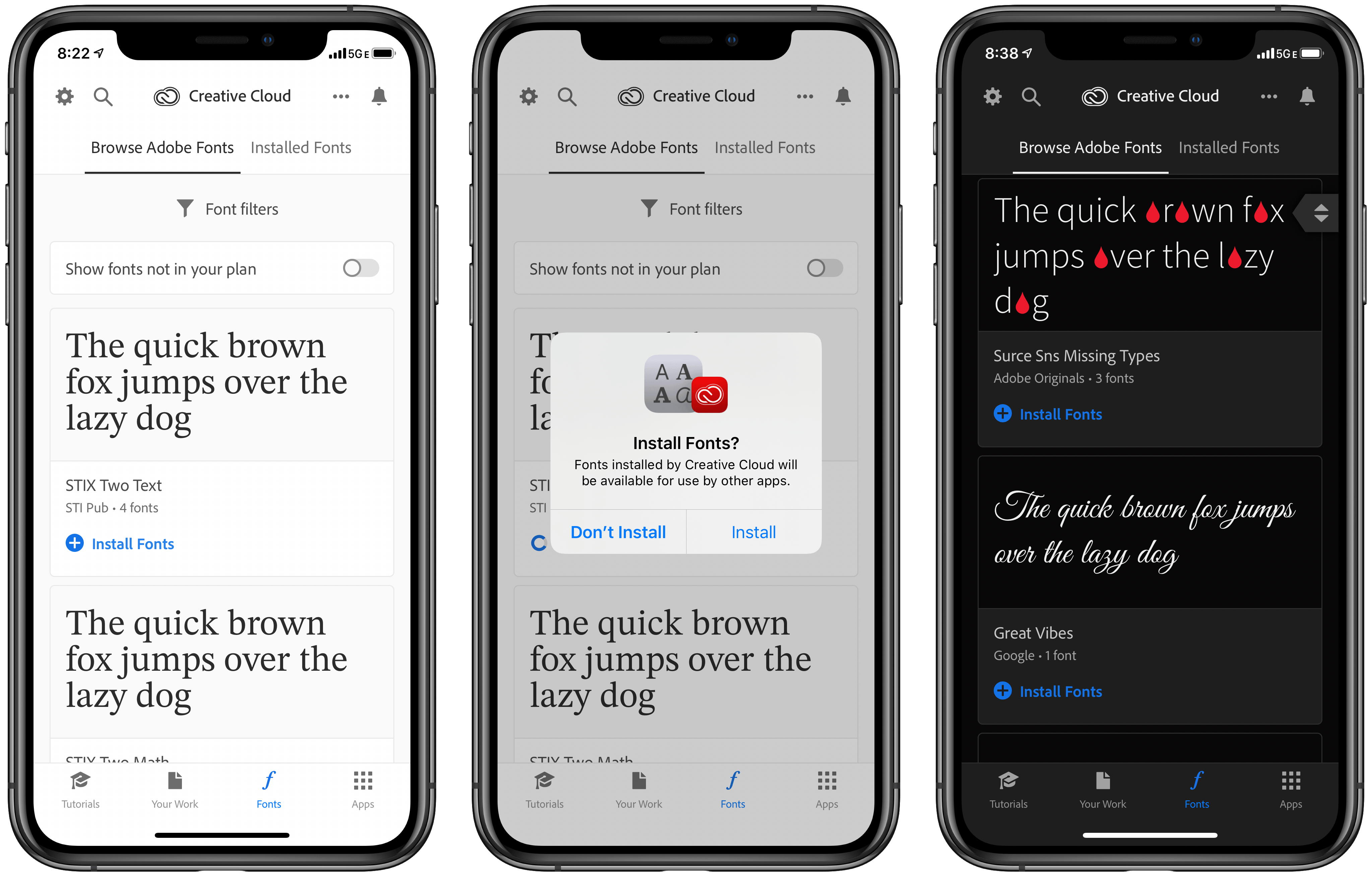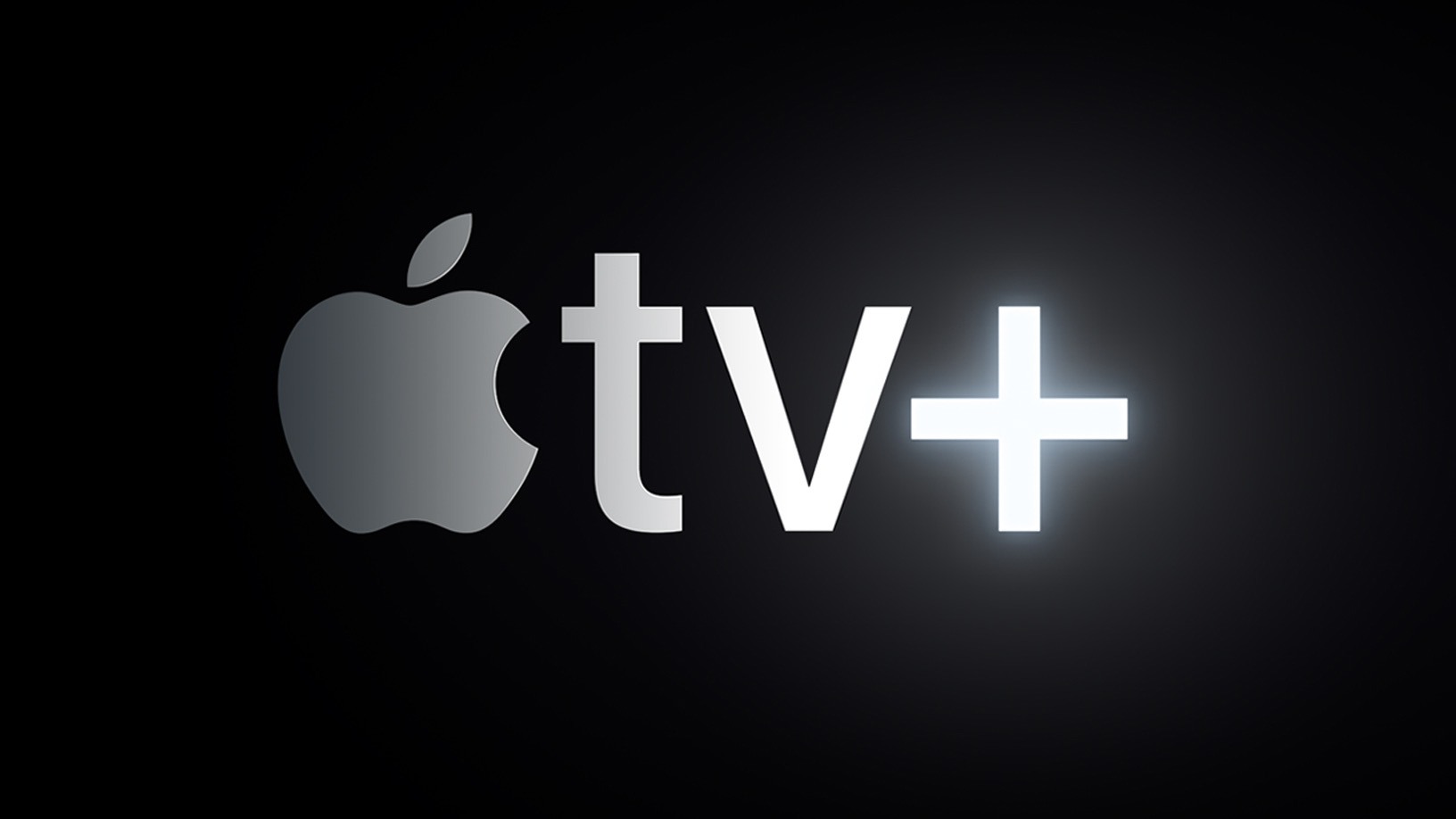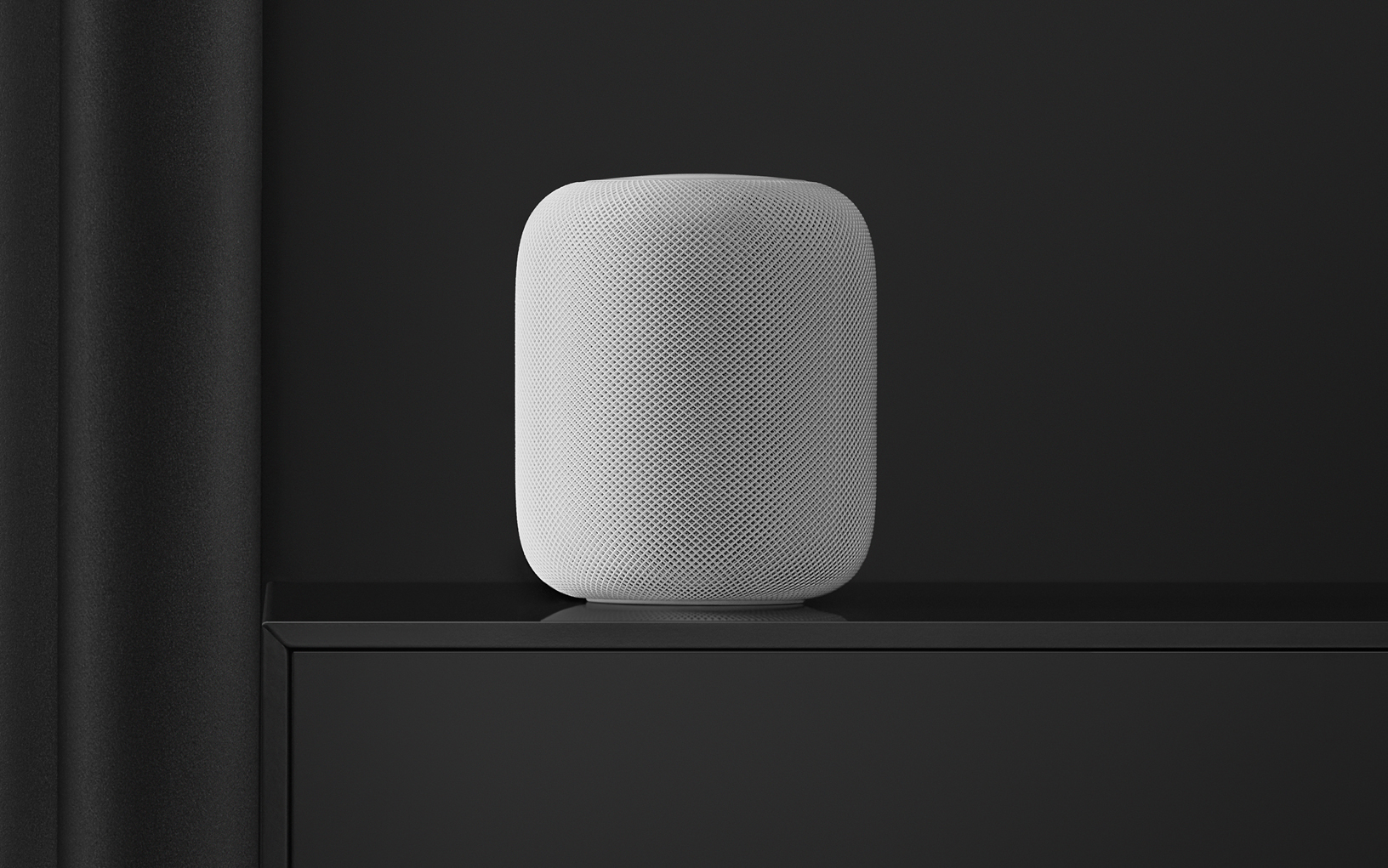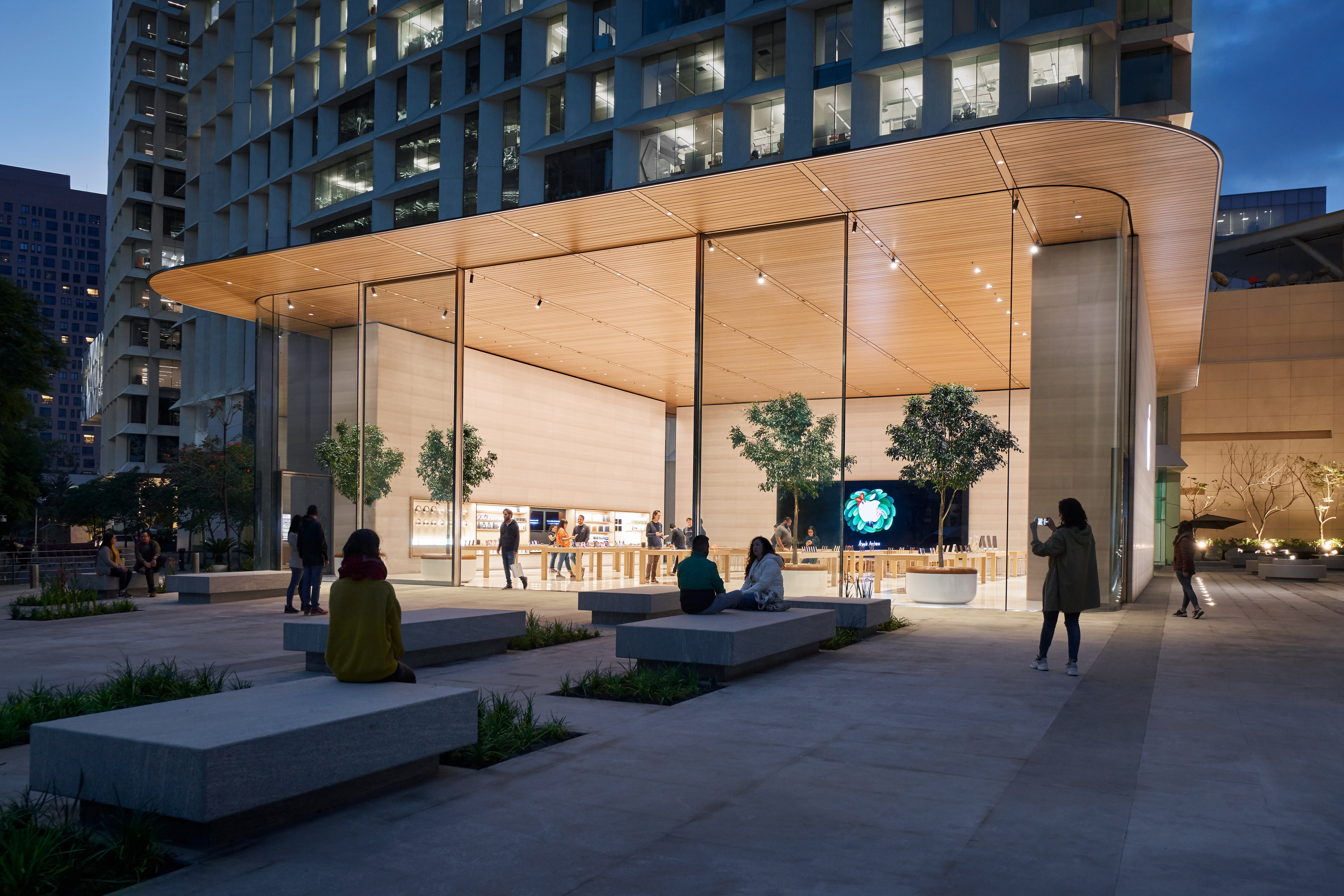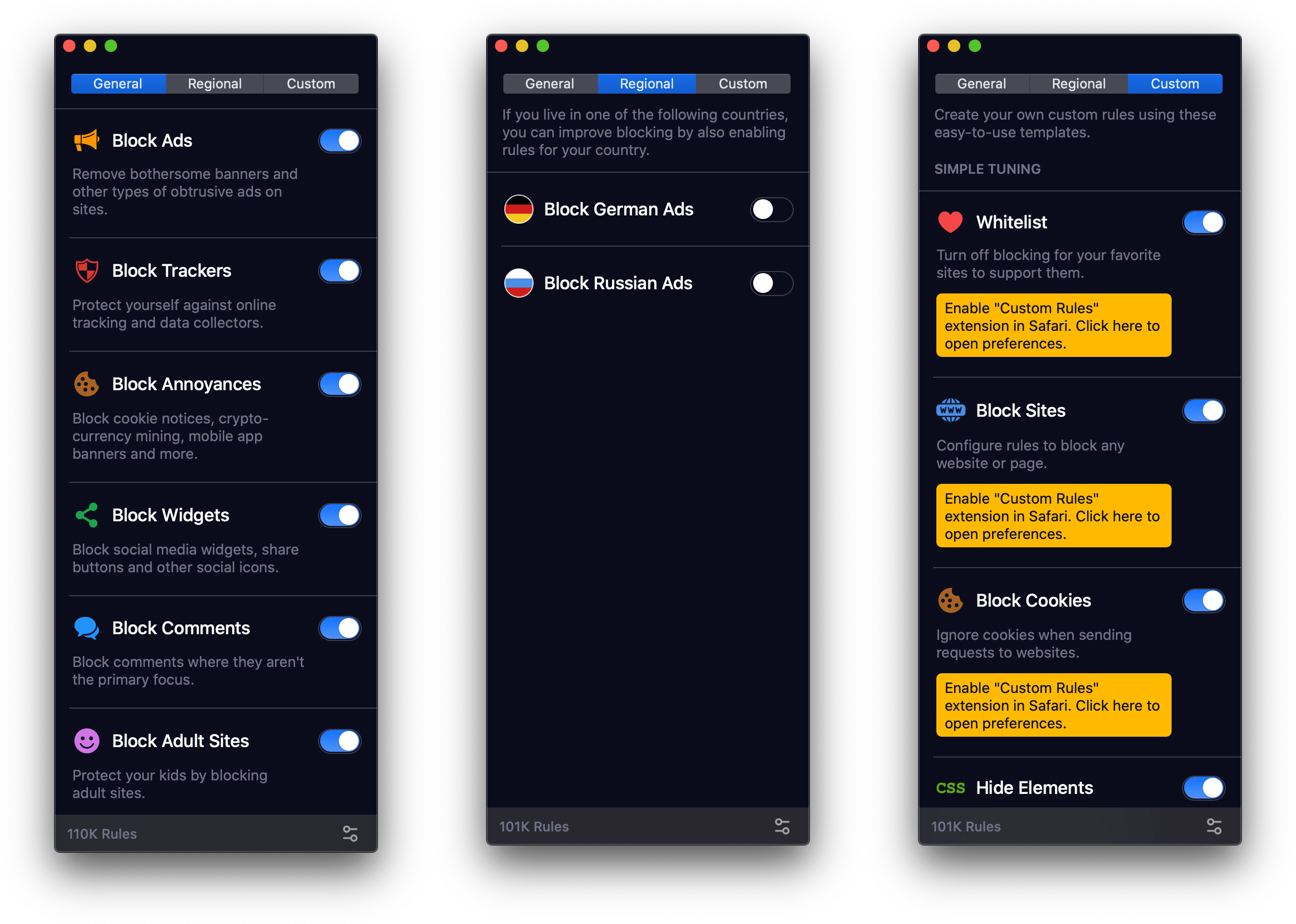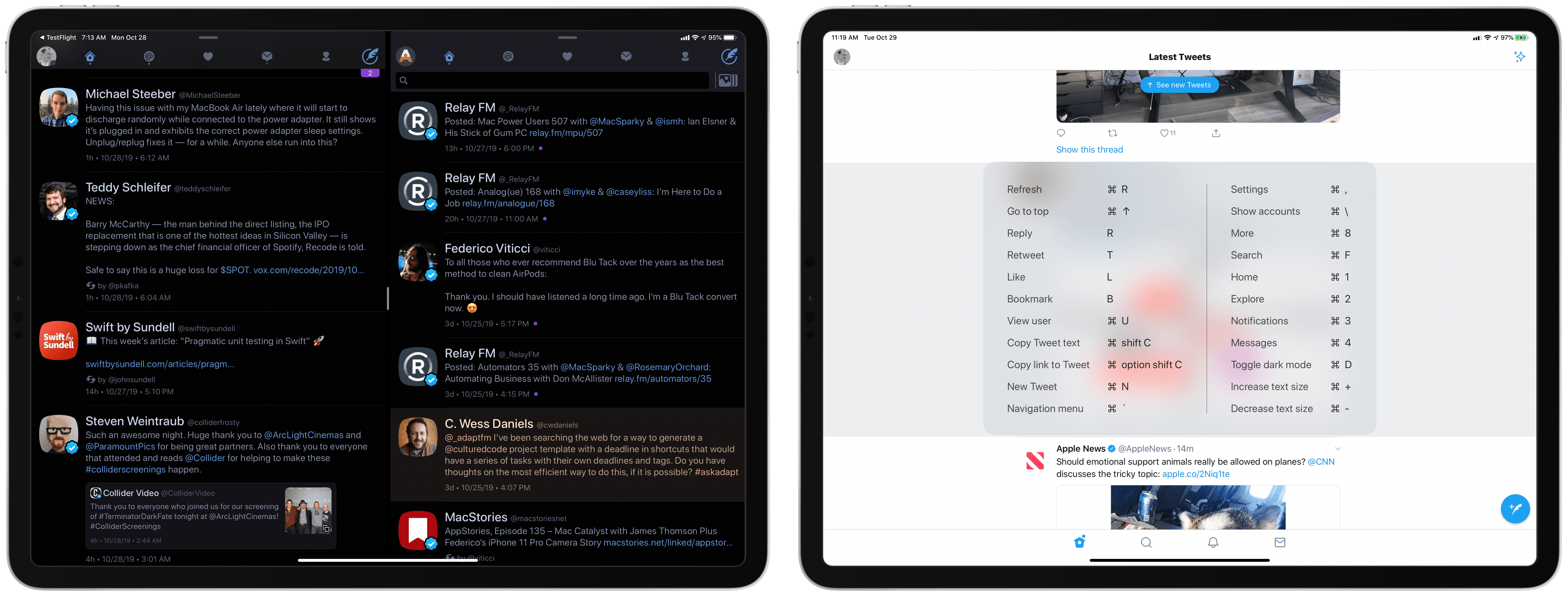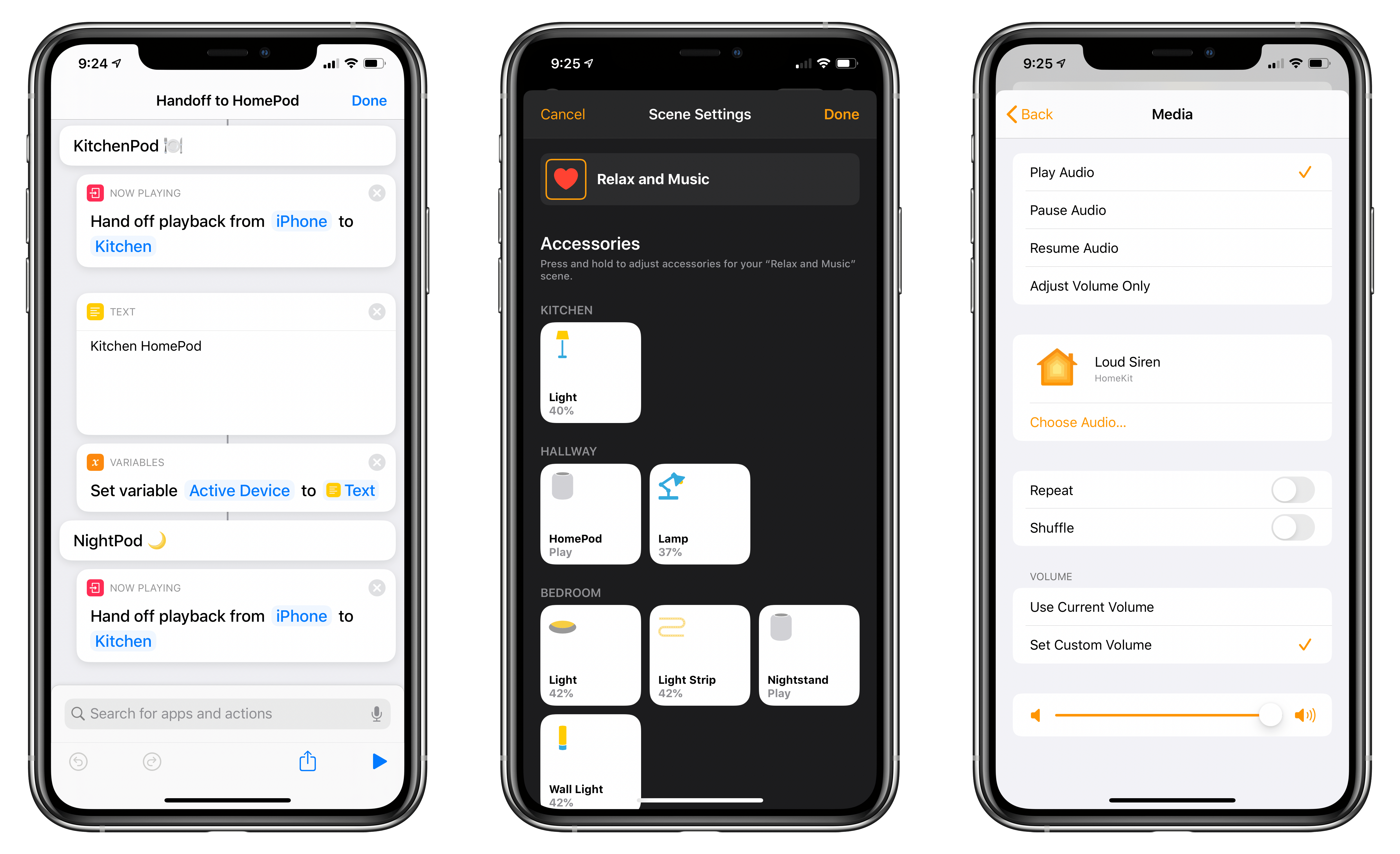Today Adobe released an update to its Creative Cloud app on iPhone and iPad which introduced a set of thousands of fonts that can now be installed on those devices via the new font provider system Apple added in iOS and iPadOS 13. Once installed, fonts from Creative Cloud can be used within any other app that supports custom fonts. The Creative Cloud app is a free download, and all users can download 1,300 fonts in the app for free; users with a Creative Cloud subscription, however, have access to a whopping 17,000 fonts.
Adobe Creative Cloud App Brings Thousands of New Fonts to iPhone and iPad
Apple TV+ Now Available: Here’s Its Full Launch Lineup
Apple TV+ is now available, a video subscription service that Apple has been working on for over two years now. The new streaming service debuts in over 100 countries, and can be accessed now inside the TV app on iPhone, iPad, Mac, Apple TV, Roku and Amazon Fire TV devices, and select smart TV manufacturers, as well as from tv.apple.com.
Apple TV+ costs $4.99 per month, but all users are offered a 7-day free trial; also, anyone who has purchased a new iPhone, iPad, Mac, Apple TV, or iPod touch since September 10 will receive a free year of service. Finally, even if you don’t subscribe at all, Apple has made the first two episodes of all of its series available for free viewing in the TV app.
While the cost of entry is low for Apple TV+, what you get for the price is also fairly limited at the moment. Apple has branded TV+ “the first all-original video subscription service,” which means there’s no back catalog of legacy content, only brand new shows and movies that have never been released before. This angle could be spun as a positive thing in some respects, because many streaming consumers these days care most about new content, but it also means you can quickly watch everything TV+ has to offer and be stuck waiting for more content.
Here’s the full lineup of everything Apple TV+ offers today:
Apple Updates the HomePod with Multi-Voice Support and Ambient Sounds, Plus iPhone Handoff, Shortcuts, and HomeKit Functionality
On Monday, Apple released audioOS 13.2 for the HomePod and before the end of the day US-time pulled it when users started reporting that it was bricking their HomePods. In addition to bricking some HomePods, other users, myself included, had trouble setting up multi-voice support. I also heard from others who had trouble getting the update to install in the first instance. Today, shortly after Apple’s earnings call concluded, the company released audioOS 13.2.1, which includes the same features and presumably fixes the issues users experienced.
Apple Q4 2019 Results - $64 Billion Revenue
Apple has just published its financial results for Q4 2019. The company posted revenue of $64 billion. Apple CEO Tim Cook said:
“We concluded a groundbreaking fiscal 2019 with our highest Q4 revenue ever, fueled by accelerating growth from Services, Wearables and iPad,” said Tim Cook, Apple’s CEO. “With customers and reviewers raving about the new generation of iPhones, today’s debut of new, noise-cancelling AirPods Pro, the hotly-anticipated arrival of Apple TV+ just two days away, and our best lineup of products and services ever, we’re very optimistic about what the holiday quarter has in store.”
Estimates and Expectations for Q4 2019 and the Year-Ago Quarter (Q4 2018)
Apple’s revenue guidance for Q4 2019 fell between $61 billion and $64 billion, with gross margin estimated to be between 37.5% and 38.5%.
Going into today’s earnings call, Marketwatch says:
Analysts surveyed by FactSet see the company posting revenue of $63 billion, nearly flat from $62.9 billion a year ago. The report will cap off a fiscal year in which Apple’s earnings and revenue are both expected to decline from a year earlier, which has happened at Apple only once since 2001.
In the year-ago quarter (Q4 2018), Apple earned $62.9 billion in revenue. During that quarter Apple sold 46.9 million iPhones, 9.7 million iPads, and 5.3 million Macs. As announced on Apple’s Q4 2018 earnings call, however, the company no longer reports unit sales for any of its products.
1Blocker for Mac Introduces New Features and a Subscription-Based Business Model
I wish I didn’t feel like I needed an ad blocker, but so much of the Internet is junked up with intrusive, distracting advertising, that it’s virtually impossible to use some websites. I don’t have an issue with most advertising, but there’s a line that is crossed too often and ruins the reading experience of many sites. Where that line is varies subjectively by person, but that’s precisely why having a flexible ad blocker like 1Blocker is crucial.
The other reason to use 1Blocker is that content blockers like it manage more than just ads. Comments, share buttons, and social media badges are only a few of the many annoyances found on sites these days. Add to those, things like trackers and bitcoin mining code, and even if you don’t block a single ad, there is still plenty to block.
1Blocker has been one of my favorite utilities since it was introduced with iOS 9 and content blockers were new to iOS. The iOS version was followed by a Mac version the next year. 2018 saw the release of 1Blocker X on iOS, which split blocking rules into multiple categories to get around rule limits imposed by the OS. With the latest update to 1Blocker’s Mac app, that same functionality has been brought to the Mac along with a redesign of the app’s UI and a new subscription-based business model.
Sebastiaan de With Explains Why the iPhone 11 Camera Is Such a Big Leap Forward→
Sebastiaan de With, part of the team behind the camera app Halide has published part 1 of a multi-part breakdown of the iPhone 11 camera. It’s a fantastic analysis of what makes the new camera different from past versions and goes into great depth while remaining accessible, even if you have only a passing familiarity with photography.
To put this year’s camera into perspective, de With recaps what Apple did with last year’s iPhone cameras explaining how Smart HDR works and its shortcomings. The iPhone 11 features Smart HDR too, but as de With explains, Apple has significantly improved how it handles the dynamic range of an image.
Another aspect of the improvement is in the camera sensor hardware. Despite its diminutive size, the iPhone 11’s image sensor can resolve more detail than any iPhone camera before it.
However, many of the iPhone 11’s camera improvements come down to better software. The new camera post-processes each component of an image differently, applying different noise reduction to the sky, a face, hair, and clothing, for example. Apple calls the feature Photo Segmentation, and it’s aided by machine learning.
One of my favorite features of the new camera is Night Mode. As de With notes:
In the iPhone 11 Night Mode, you can also see detail vanish in some areas. Except that it really seems to only affect parts of the image that you don’t really care that much about. Night Mode has a remarkable if not uncanny ability to extract an image that is sometimes even sharper than the regular mode, with strong sharpening and detail retention occurring in areas that are selected by the camera during processing.
The iPhone 11’s camera is also the first one de With thinks rivals standalone cameras:
In the past, iPhones made great photos for sharing on social media, but blown up on a big screen, the shots didn’t hold up. It’s why I frequently still pack a ‘big’ camera with me on trips.
With these huge improvements in processing, the iPhone 11 is the first iPhone that legitimately challenges a dedicated camera.
There are many more details in de With’s article, including a close look at the iPhone 11’s ultra wide lens. Every section of the post has photos and side-by-side comparisons that illustrate the analysis too, which makes the full post a must-read].
Twitter iPad Apps Upgraded with Multiwindow Support, Keyboard Navigation
This fall has been a significant season for the iPad. While new hardware has been limited to an updated entry-level iPad, the software changes have more than made up for the dearth of hardware updates. September brought iPadOS, the new branch of iOS that packs advancements like multiwindowing, an upgraded Home screen, and more. Mere weeks after iPadOS launched, macOS Catalina enabled a host of iPad apps to be brought to the Mac, which in some cases meant those iPad apps became more Mac-like as a result.
Thanks to these recent software changes, a couple of key Twitter apps for iPad have been updated to offer key new functionality. Twitterrific has become the first Twitter client to add multiwindow support, enabling creating separate windows for different accounts or different views within the same account. The first-party Twitter app, meanwhile, has recently added extensive support for external keyboards, likely as a side benefit of the app making its way to the Mac. In both cases, the Twitter experience on iPad has been meaningfully improved in ways that power users will appreciate.
AppStories, Episode 136 – GameClub and a Shortcuts Update→
On this week’s episode of AppStories, we talk about GameClub, the classic iOS game service that launched last week, and some of the shortcuts we’ve been working on lately.
Sponsored by:
- Linode – High performance SSD Linux servers for all of your infrastructure needs. Get a $20 credit.
- Kolide – User focused security for teams that Slack. Try it free for 30 days.
- UpHabit – The app that makes connecting with people you care about part of your routine. Try it for free or take advantage of 60% off for new subscribers.
Hands-On with HomePod’s New Music Features for HomeKit, Shortcuts, and Handoff
Following the announcement of AirPods Pro earlier today, Apple also released iOS, iPadOS, audioOS, and tvOS 13.2. Among various features (which we’ve detailed in a separate story here), one of the key improvements in this suite of software updates is extended flexibility of the HomePod’s music playback abilities.
In fact, by updating to the latest version of Apple’s software, you’ll gain a variety of new audio-related functionalities for HomePod, ranging from the ability to wave an iPhone atop the speaker to hand off audio to brand new integrations with the Shortcuts app as well as HomeKit scenes and automations. In this post, I’m going to go over all the different ways you can control audio playback on Apple’s Siri-integrated speaker, explain new shortcuts that can be built with these features, and share some first impressions based on my initial tests with today’s changes. We’re going to cover HomePod’s other new functionalities such as multi-user support and ambient sounds later this week. Let’s dive in.


